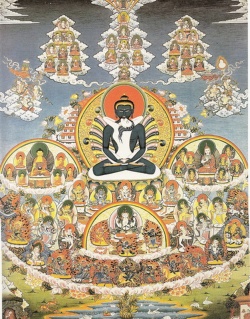What is Consciousness?
The Blessed Buddha has explained consciousness as:
A: Definitions:
What, now, is consciousness?
There are six kinds of consciousness (viññāna-khandha):
[[1: Consciousness of form is visual consciousness,
2: Consciousness of sound is auditory consciousness,
3: Consciousness of smell is olfactory consciousness,
4: Consciousness of taste is gustatory consciousness,
5: Consciousness of touch is tactile consciousness,
6: Consciousness of thought is mental consciousness.
B: Causation by Dependent Origination:
The arising of consciousness is dependent upon specific conditions... Without presence of these conditions, no consciousness will ever emerge... Consciousness is named after the conditions upon which it is dependent! Consciousness, whose arising depends on the encounter of eye & forms, is called visual consciousness. Consciousness, whose arising depends on the ear & sounds, is called auditory consciousness. Consciousness, whose arising depends on the nose and smells, is called olfactory consciousness. Consciousness, whose arising depends on the tongue and taste, is called gustatory consciousness. Consciousness, whose arising depends on the meeting of the body or skin and touch is called tactile consciousness. Consciousness, whose arising depends on mind meeting a mental object, state, idea or thought is called mental consciousness.
The central role of active Attention:
Even though the eye is intact, if external form does not fall within the field of vision, then no attentive combination of eye & form takes place, therefore there will not emerge any visual consciousness. Or even though external form actually fall within the field of vision, yet if no attentive combination of eye & form takes place, there will neither emerge any visual consciousness. Only if, the eye is intact, external form fall within the range of vision, & attentive combination of eye & form takes place, then there arises the corresponding phenomenon of visual consciousness. (Similarly so with the other 5 kinds of consciousness)
C: Dependency on the other four Clusters of Clinging: It is impossible for anyone to explain the passing out of one existence, and the entering into a new process of existence during transmigration, or the initiation, growth, increase, and development of consciousness, independently of form, feeling, perception, and mental construction...
D: Consciousness is constructed & causes a duality: Naming & Forming: The Origin of Consciousness is the arising of Mental Construction... The Ceasing of Mental Construction also ceases Consciousness... The Origin of Name-&-Form is the arising of Consciousness... The Ceasing of Consciousness also ceases Name-&-Form... MN 9 Only this absolute silencing is Peace, is Bliss, is Freedom
Comment:
Like space has no essence in itself beyond being 'spacious', but can contain, accommodate, hold, & include all material phenomena, then similarly has consciousness no essence in itself beyond being 'aware' of all the mental phenomena it can manifest, display, show, exhibit, expose, express, create and reveal. It defines & establishes being... It is momentary and vanishes instantly after it has arisen. It is Not an abiding presence, entity, soul, I, me, ego, core, nor any identity... Apart from conditions, there is nothing arising as or in consciousness... All forms of consciousness are impermanence, suffering, and no-self, whether it is past, future or present, gross or subtle, arisen internally in oneself or externally in others, inferior or exalted, remote or near... Buddha likened consciousness to a deceiving trick: A made-up illusion... Consciousness is like a burning pit of hot embers one should not enter!


